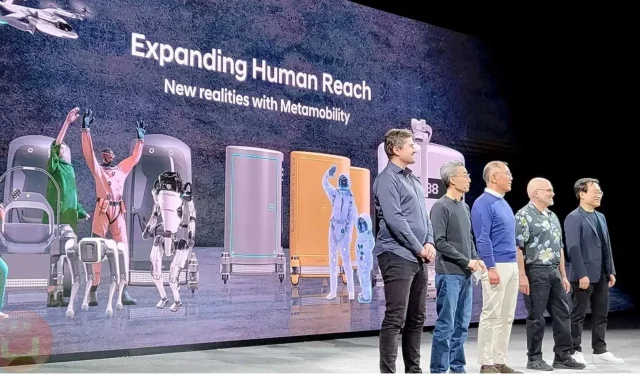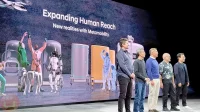Hyundai Motor is presenting its vision for the future of mobility between metamobility and facility mobility at CES.
Hyundai Motor arrived at CES 2022 with two new concepts: “metamobility”and “object mobility”(MoT). According to the automaker, Object Mobility will provide “movement to traditionally inanimate objects using the company’s robotic technology.”
Hyundai Motor Unveils Its Vision for Future Mobility at CES
Metamobility is a concept that embodies Hyundai’s vision for the future of robotics and mobility, in which humanity will develop a connection between the device of the metaverse to extend mobility into virtual reality (VR). According to Hyundai, the robots “will act as an intermediary between the real world and the virtual space, allowing users to make changes to the metaverse and see them reflected in reality.”
“The idea of metamobility is that space, time and distance will become irrelevant. By connecting robots to the metaverse, we will be able to move freely between the real world and virtual reality,” explained Eysun Chang, president of the group, during the presentation. “It’s about going even further than the immersive ‘I’m Here’ proxy experience that the Metaverse offers, robots will become extensions of our own physical senses, allowing us to reshape and enrich our daily lives through metamobility.”Hope that in this future man will still matter!
Following its recent nearly $1 billion acquisition of Hyundai Boston Dynamics, Hyundai Motor has focused its announcements on robotics and has a wide range of robots on display at CES 2022.
Between metamobility and mobility of objects
In particular, Hyundai showed off its Plug & Drive (PnD) Modular Platform, an intelligent mobility solution that combines steering, braking, electric motor in the wheel and hardware suspension.
Thanks to the steering gear, this device has a wheel that can rotate 360°, a feature that allows holonomic movement while the device acts like a skater. PnD is equipped with LiDAR and camera sensors for autonomous movement.
PnD modules can be placed on a wide variety of sites or platforms, from tables to containers, and users can choose from a variety of pipe configurations and sizes.
“The PnD module is adaptable to human needs. Because in the world to come, you won’t move your objects, they will move around you,” explained Dong Jin Hyun, Vice President and Director of Hyundai Motor Robotics Lab. “PnD makes normally inanimate objects mobile. Its very function allows you to make almost any space changeable. It’s a way to customize the space on demand.”
Dong Jin Hyun specifically mentioned how offices can be customized and reconfigured on demand so that people always work in a project-optimized environment.
CES is offering Hyundai the opportunity to showcase four PnD concepts representing several aspects of MoT, including personal mobility, service mobility, logistics mobility, and L7 (Module Modified for Personal Mobility).
These wheeled platforms can be configured into any other MoT module. If Hyundai presented just four use cases, the manufacturer reminds that the possibilities of MoT are endless.
For example, the concept of Personal Mobility is a cabin on four PnD modules. It could carry someone over short distances, controlled by a simple joystick, with no foot pedal or steering wheel. Personal mobility modules can also attach and detach from the “mothership”for very efficient “last mile”transport.
The L7 concept takes things to the extreme, using 12″PnD modules, it shows what a different Personal Mobility design could look like.
In attendance after the conference, Dong Jin-hyun and Mark Reibert, president and founder of Boston Dynamics, explained, among other things, that the next generation of robots will not replace human workers, but will enhance their capabilities to help them unlock millions of new job opportunities.


